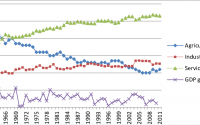The Impact of Signage and Billboards on Modern Advertising

Securing the interest of potential clients has become increasingly crucial in today’s competitive market. A highly effective strategy for achieving this is the utilization of signage and billboards. These advertising methods have a longstanding history and persist as a vital component in the marketing domain. In this blog post, we will investigate the background, progression, advantages, and future trajectory of signage and billboards within the realm of advertising.
The History of Signage and Billboards
Signage and billboards have been used as advertising tools for centuries. The ancient Egyptians used tall stone obelisks to publicize their laws and treaties, while the ancient Greeks and Romans used signs made from terracotta or stone to announce public events and direct travelers.
The modern billboard, as we know it today, can be traced back to the 19th century. In 1835, Jared Bell created the first large-scale posters for the circus in New York City. These posters were the precursors of the billboards we see today, and they quickly gained popularity as an advertising medium.
The Evolution of Signage and Billboards
Over the years, signage and billboards have evolved to keep up with changing technology and consumer preferences. In the early 20th century, electric signs became popular, and the famous Times Square in New York City became a hub for this new form of advertising.
In the 1950s and 1960s, billboards started to incorporate photographs, making them even more eye-catching and effective. With the advent of digital technology, electronic billboards began to appear in the 1990s, allowing advertisers to display multiple messages and change them quickly.
Today, signage and billboards come in various forms, from traditional printed posters to digital displays and even interactive screens that engage passersby.
The Benefits of Signage and Billboards
Signage and billboards offer numerous benefits to businesses and advertisers. Some of these advantages include:
Visibility: Billboards and signs are often placed in high-traffic areas, ensuring maximum exposure to potential customers.
Cost-effective: Compared to other forms of advertising, such as television or radio, billboards are relatively inexpensive and can reach a large audience.
Targeted: Advertisers can choose specific locations for their billboards, allowing them to target particular demographics or geographic areas.
Flexibility: Signage can be easily updated or changed, making it an adaptable form of advertising that can evolve with a business’s needs.
Click here to discover the top advertising solutions and know about reliable billboard companies.
The Future of Signage and Billboards
As technology continues to advance, the future of signage and billboards looks bright. We can expect to see more interactive and immersive advertising experiences, such as virtual reality and augmented reality billboards. Additionally, the use of data analytics will enable advertisers to create more targeted and personalized campaigns, increasing their effectiveness.
Sustainability will also play a significant role in the future of signage and billboards. Eco-friendly materials and energy-efficient lighting options will become more prevalent, reducing the environmental impact of these advertising mediums.
Conclusion
Signage and billboards have come a long way since their inception, and they continue to be a vital part of the advertising landscape. As technology advances and consumer preferences change, we can expect these mediums to evolve and adapt, offering businesses even more opportunities to reach their target audiences effectively.


